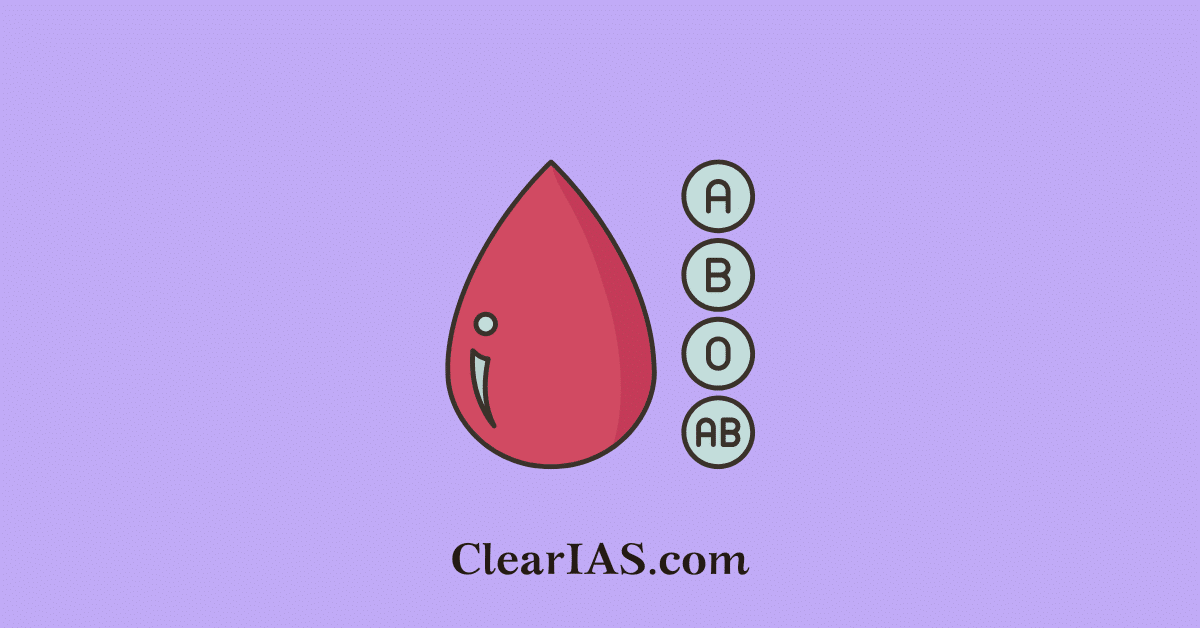
While most of us are familiar with the ABO and Rh blood group systems, the world of transfusion medicine is far more complex. Beyond the common types lie a realm of rare and ultra-rare blood groups, which are of profound clinical significance. Read here to learn more.
Blood is often referred to as the lifeline of the human body, playing a vital role in transporting oxygen, nutrients, and immune cells throughout the body’s systems.
Recent breakthroughs, such as the discovery of CRIB in India and Gwada Negative in Guadeloupe, highlight the evolving frontier of haematological science and the growing need to understand and catalogue diversity in blood groups.
Basic Blood Groups in Humans
The most well-known blood grouping system is the ABO system, discovered by Karl Landsteiner in 1901, followed by the Rh (Rhesus) system, which determines whether an individual is Rh-positive or Rh-negative.
Together, these systems are crucial for ensuring the safety of blood transfusions and managing maternal-fetal blood compatibility.
However, the International Society of Blood Transfusion (ISBT) recognizes over 40 blood group systems, many of which have clinical relevance in transfusions and transplantations.
- ABO Blood Group System (discovered by Karl Landsteiner in 1901)
- Based on the presence or absence of A and B antigens on red blood cells.
- Types:
- A: A antigen, anti-B antibody
- B: B antigen, anti-A antibody
- AB: A and B antigens, no antibodies (universal recipient)
- O: No antigens, both antibodies (universal donor)
- Rh Factor (Rhesus System)
- Based on the presence of the D antigen:
- Rh-positive: D antigen present
- Rh-negative: D antigen absent
- Based on the presence of the D antigen:
Other Recognised Blood Groups
There are over 40 known blood group systems (WHO-recognised), including:
- Kell
- Duffy
- Kidd
- MNS
- Lewis
- P
- Lutheran
- Cromer (CR)
Rare Blood Groups in the World
Rare blood groups are typically defined as those that are found in fewer than 1 in 1,000 individuals in a population.
- Bombay Blood Group (hh or Oh phenotype)
- First discovered in Mumbai (1952)
- Lacks A, B, and H antigens
- Extremely rare: ~1 in 10,000 in India, rarer globally
- Can receive blood only from another Bombay group individual
- Rh Null (“Golden Blood”)
- Lacks all Rh antigens (D, C, c, E, e)
- Extremely rare with fewer than 50 people known worldwide
- Universal donor for Rh-negative patients, but can only receive Rh-null blood
- Diego, Lutheran, and Duffy Negative Types
- Rare among certain ethnic populations
- It can pose challenges during transfusions or pregnancies
Newly Discovered Rare Blood Types
CRIB Blood Group (2024–25)
- Discovered in a 38-year-old woman at Rotary Bangalore TTK Blood Centre.
- Confirmed by the International Blood Group Reference Laboratory (IBGRL), UK
- Part of the Cromer (CR) blood group system
- Name origin: CR (Cromer) + IB (India, Bengaluru)
- Important for advancing transfusion safety and antibody screening
Gwada Negative (2024)
- Identified in a French woman from Guadeloupe
- Reported as a completely new and unique blood type
- Possibly the only known carrier globally
Significance of Rare Blood Groups Research
- Clinical relevance: Helps avoid transfusion reactions in rare antigen-negative individuals
- Maternal-fetal health: Prevents hemolytic disease of the newborn in incompatible pregnancies
- Global registries: Aid in emergency matching of rare blood types
- Scientific value: Enhances understanding of human genetic diversity and evolution
Building a Global Registry for Blood Groups
Given the increasing global movement of people and inter-ethnic marriages, the need to maintain international rare donor registries is more urgent than ever.
Organisations like the WHO, ISBT, and Rare Donor Programs work with national blood services to:
- Maintain frozen stocks of rare blood
- Facilitate cross-border transfusion requests
- Encourage genetic screening in populations with a high likelihood of rare phenotypes
India, with its vast genetic diversity, has an opportunity to lead in this space by:
- Investing in molecular blood typing labs
- Promoting voluntary rare blood donor registries
- Supporting awareness campaigns on blood group diversity
Conclusion
While the ABO and Rh systems remain the most common for practical transfusions, the discovery of rare blood groups like CRIB and Gwada Negative mark milestones in transfusion medicine and genetic research.
They underscore the need for better global rare blood donor registries and awareness of blood diversity, especially in multicultural societies like India.
UPSC Prelims MCQ: Practice Question
Q. With reference to recent developments in transfusion medicine, consider the following statements:
- The CRIB blood group, recently discovered in India, is part of the Cromer blood group system.
- The Gwada Negative blood type was identified in a woman from South India and is considered one of the most common rare blood groups globally.
- The Bombay blood group lacks A, B, and H antigens and is most prevalent in Western India.
- The Rh-null blood group is often referred to as the “Golden Blood” and is known for having all Rh antigens in high concentrations.
Which of the above statements is/are correct?
A. 1 and 3 only
B. 2 and 4 only
C. 1, 2 and 4 only
D. 1, 3 and 4 only
Explanation:
- Statement 1: Correct: The CRIB blood group (Cromer-India-Bangalore) is indeed a part of the Cromer blood group system, discovered in Bengaluru.
- Statement 2: Incorrect: Gwada Negative was discovered in a French woman from Guadeloupe, not South India, and it is extremely rare, not common.
- Statement 3: Correct: The Bombay blood group (hh or Oh phenotype) lacks A, B, and H antigens, and is found more frequently in Western India, especially in Mumbai.
- Statement 4: Incorrect: The Rh-null blood group lacks all Rh antigens, not has them in high concentrations. It’s known as “Golden Blood” because of its rarity.
Related articles:







Leave a Reply